Was This the Biggest Rescue?
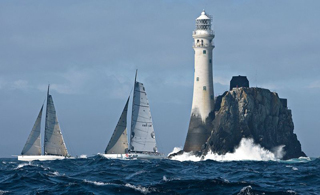 Last month I had a look at many of the Cornish Lifeboat Stations and some of the big rescues in which they have been involved. This month I want to remind you of what was probably the biggest operation in which the RNLI has been involved, at least in regard to the number of boats launched at one time.
Last month I had a look at many of the Cornish Lifeboat Stations and some of the big rescues in which they have been involved. This month I want to remind you of what was probably the biggest operation in which the RNLI has been involved, at least in regard to the number of boats launched at one time.
The date was August 14th, 1979, the middle of summer, and the occasion was the Fastnet Race, when a great fleet of yachts sails from the Solent, around the Fastnet Rock off south west Ireland, and back to the Solent. A biennial event, it comes as the culmination of Cowes Week, though it is not actually part of the Regatta. The distance is over 600 miles and, on this occasion, 306 yachts took part. Yachts can be a mixed bag so long as they are over 30ft length overall, not more than 70ft, and at least half of the crew must have some experience of ocean racing.
I will not go into great detail but sufficient to say that the race is not a casual day out and crews must expect the very worst that the weather can throw at them. This produces a pretty mixed bag, the bigger yachts almost twice as fast as the 30ft ones, bringing about what we see from the Lookout as a stream of yachts pass on the horizon, there when we come on at 9.30am and still going by when we leave in the evening.
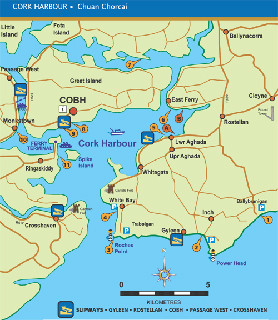 The race started on a fine summers day and this lasted for 24 hours, but as the yachts approached the Irish Coast the weather began to deteriorate, nothing to worry about yet, no indication of what was to come. I know because I was also on the Irish Coast in my own boat with my wife, a 16 year old daughter and her friend. We were cruising west along the coast and, on the night of 13th August, we were sitting on an anchor in Cork Harbour, thinking it was unlikely we would move the next day as the weather forecast was not good – at least for a shorthanded family crew.
The race started on a fine summers day and this lasted for 24 hours, but as the yachts approached the Irish Coast the weather began to deteriorate, nothing to worry about yet, no indication of what was to come. I know because I was also on the Irish Coast in my own boat with my wife, a 16 year old daughter and her friend. We were cruising west along the coast and, on the night of 13th August, we were sitting on an anchor in Cork Harbour, thinking it was unlikely we would move the next day as the weather forecast was not good – at least for a shorthanded family crew.
I woke at about three in the morning, the wind howling in the rigging, the boat jumping up and down and tugging at its anchor chain. Cork Harbour is similar to Falmouth Harbour, a big, wide space, normally quite safe in a blow. Putting my head out of the hatch did nothing to reassure me. White water was coming aboard the bows and I wondered how long we could stay where we were, yet did not fancy retrieving the anchor and going anywhere in that blow while it was still dark. I let out more chain and crossed my fingers. Fortunately at this time of year it starts to get light at 4am and, by then, the wind had risen to what seemed hurricane force. We had to move.
I started the engine and my wife, Ann, performed her usual miracle, scrambling along the heaving deck and somehow dragging in 80 feet of chain and a 25lb anchor without losing her fingers or going over the side. The wind had driven me backwards towards the shore as we got the anchor in but, giving the engine everything it had got, I was just able to make headway across the Harbour and into the shelter of the river at Crosshaven. Twenty minutes later we were sitting on a buoy in Drake’s Pool, listening to the wind in the trees.

At sea the situation was now desperate. All of the smaller boats had given up any idea of racing and were fighting for their lives. Some managed to get distress messages off but few knew exactly where they were. This was the days before any sophisticated navigational aids and positions were found the hard way – bearings, estimated speed, wind strengths, drift and a lot of luck. But the warning had gone out that the fleet was in trouble and the English, Dutch, Irish and American navies rushed to help.
Helicopters and lifeboats were alerted. Four Irish Lifeboats were launched from Dunmore East, Courtmacsherry, Baltimore and Ballycotton. English boats were launched from Isles of Scilly, Sennen, Lizard and the Solomon Browne from Newlyn, later to be supplemented by boats from Padstow and Clovelly. They were to spend up to 45 hours without break at sea in 60mph winds. Then they would go in for fuel and back out again.
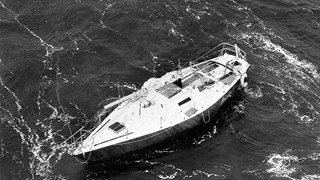
The yacht fleet was decimated, the casualties spread over a 30 square mile box. 125 yachtsmen were rescued by boat or helicopter, 15 men died. At least 75 boats suffered a knock down when the boat is put on its side, mast almost in the water, most coming back up with their crew still aboard. 24 vessels were abandoned of which 5 were sunk, the other 19 being recovered in the next few days.
Nine assorted naval vessels were involved, help coming from the Dutch, the Irish and an American submarine tender. 19 helicopters joined the rescue making many separate flights. At least one merchant vessel effected a crew rescue and there was assistance from assorted commercial and fishing vessels, particularly in helping exhausted survivors get their boats in to harbour.
All this was going on while we were catching up on our sleep on a buoy on the Owenbuoy River. Conditions had eased so we decided to go back downstream and tie up at the Royal Cork Yacht Club marina, where we found a berth, wondering what was going on. Certainly so far as we were concerned it had been a nasty blow but we really had no ideawhat it had been happening outside.
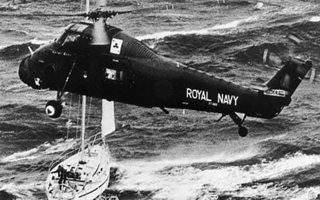
Then a few yachts began to come in, some under tow, some limping in, their decks littered by tangled ropes and sails. We stayed a couple of days listening in the bar to the stories of the crews as they relived probably the most terrifying night of their lives. One story has stayed with me to this day. An Army boat had come in, its sails in shreds but still under its own power, and tied up not far from us. One of the bigger boats they had apparently tried to keep going and get round the Rock knowing that, once turned for home, the wind would be behind them.
A sail change was necessary as they still carried a nearly full mainsail and a large genoa. The genoa is an oversized foresail, a powerful driving sail used to get the best speed out of the boat but the time comes when it is too big and threatens to overpower the boat. Reefing the main was no difficulty but when they tried to roll the genoa they found that it was jammed at the head. Neither could they drop it as it would not come down. They tried every trick in the book but they could not free it nor could they gather it in anyway as most of the sail was high above their heads. The situation was now desperate. As the wind rose that sail was capable of lying the boat flat or snapping the forestay in which case the mast would come down. To turn round and run with it risked it driving the bow under.
The solution was desperate and simple. A volunteer went up the mast with a knife then slid down the forestay cutting the sail off as he came!
This was the first, but not the only occasion, on which I realised the therapeutic effect of simply talking about something to other people. No matter how frightening something has been, how unpleasant or demanding, unwinding with a group of others somehow reduces everything to its basics. By the time you have told your story about ten times you begin to think, ‘Perhaps it wasn’t such a big deal after all.’ Even better if those you are drinking with have had similar experiences. Today it’s called ‘Counselling’.
Fastnet ’79 was the supreme example of how professionals and volunteers can work together. No one questioned any else’s ability to perform their function, they just got on and did their own job knowing that back up was there, professional or otherwise. Ten lifeboats were involved so, at a guess of eight to a crew, that was eighty trained volunteers while acknowledging the fact that some boats would have had full time paid mechanics. Other crew members would simply go back to the ‘day job’ after a rest and a slow wind down.
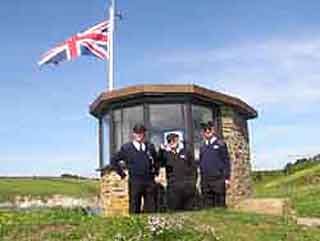 As National Coastwatch members we are privileged to belong to a nationwide voluntary group of men and women who can give their spare time to watch over others. With 52 NCI stations and over 2000 volunteers we are able to give a safety watch around the English coast from Mablethorpe in the east to Fleetwood in the west.
As National Coastwatch members we are privileged to belong to a nationwide voluntary group of men and women who can give their spare time to watch over others. With 52 NCI stations and over 2000 volunteers we are able to give a safety watch around the English coast from Mablethorpe in the east to Fleetwood in the west.
Hopefully it is unlikely that we would ever become involved in such a rescue as the 1979 Fastnet Race, but I don’t think that the kayaker rescued by the efforts of the St. Agnes Watchkeeper last August will think any the less of us for that. Nor will the father whose small son is snatched off a drifting airbed by the RNLI having been spotted by our Portscatho Watchkeeper. It has not happened yet – but the ‘safety net’ will be in place again this year from the end of March to October. That net still has a few holes in it. You could fill one. Find out how by giving Sue a ring on 01872-530500 or Chris on 01326-270681.
Pictures courtesy of Wikipedia, RNLI and NC!

